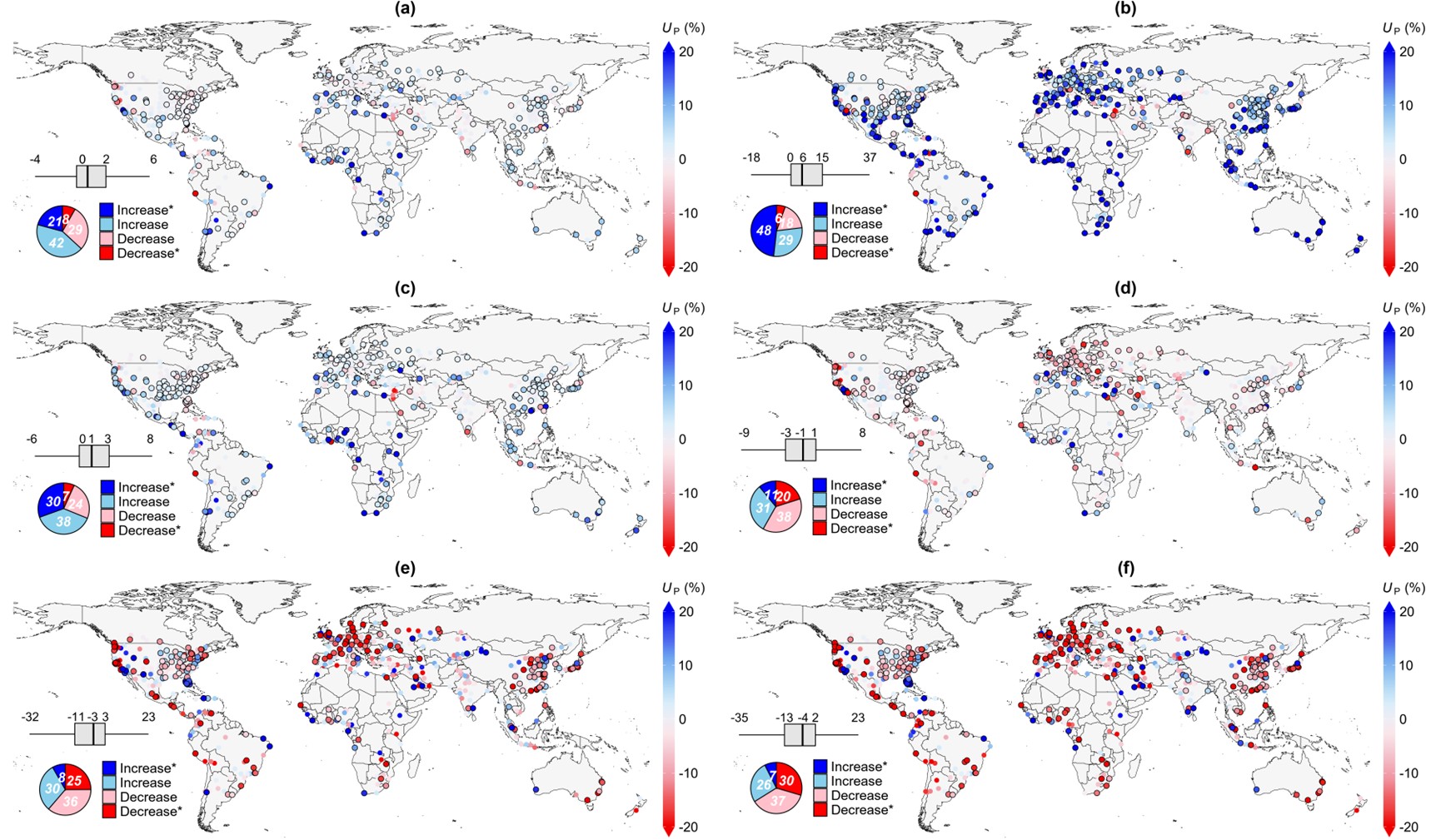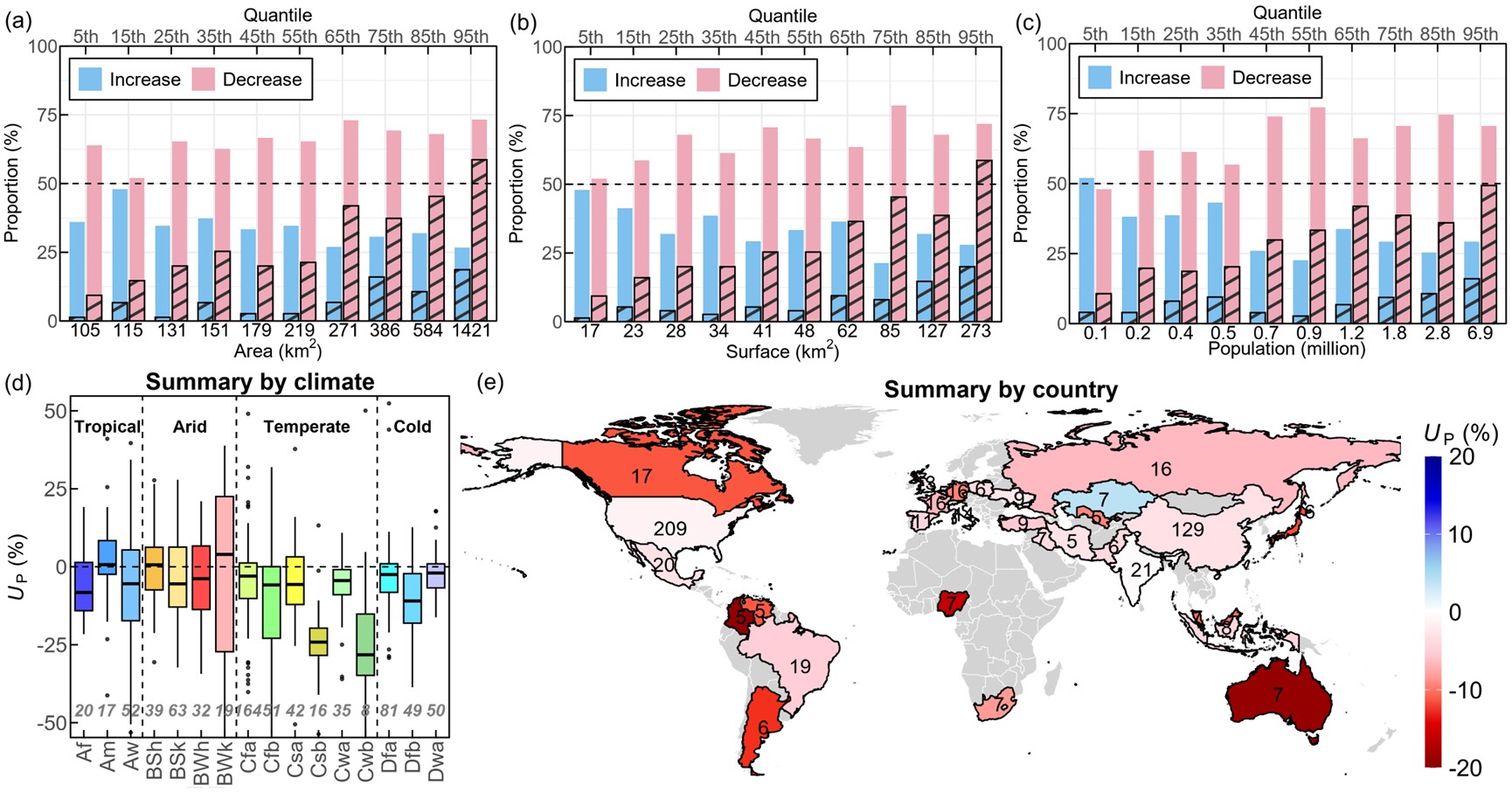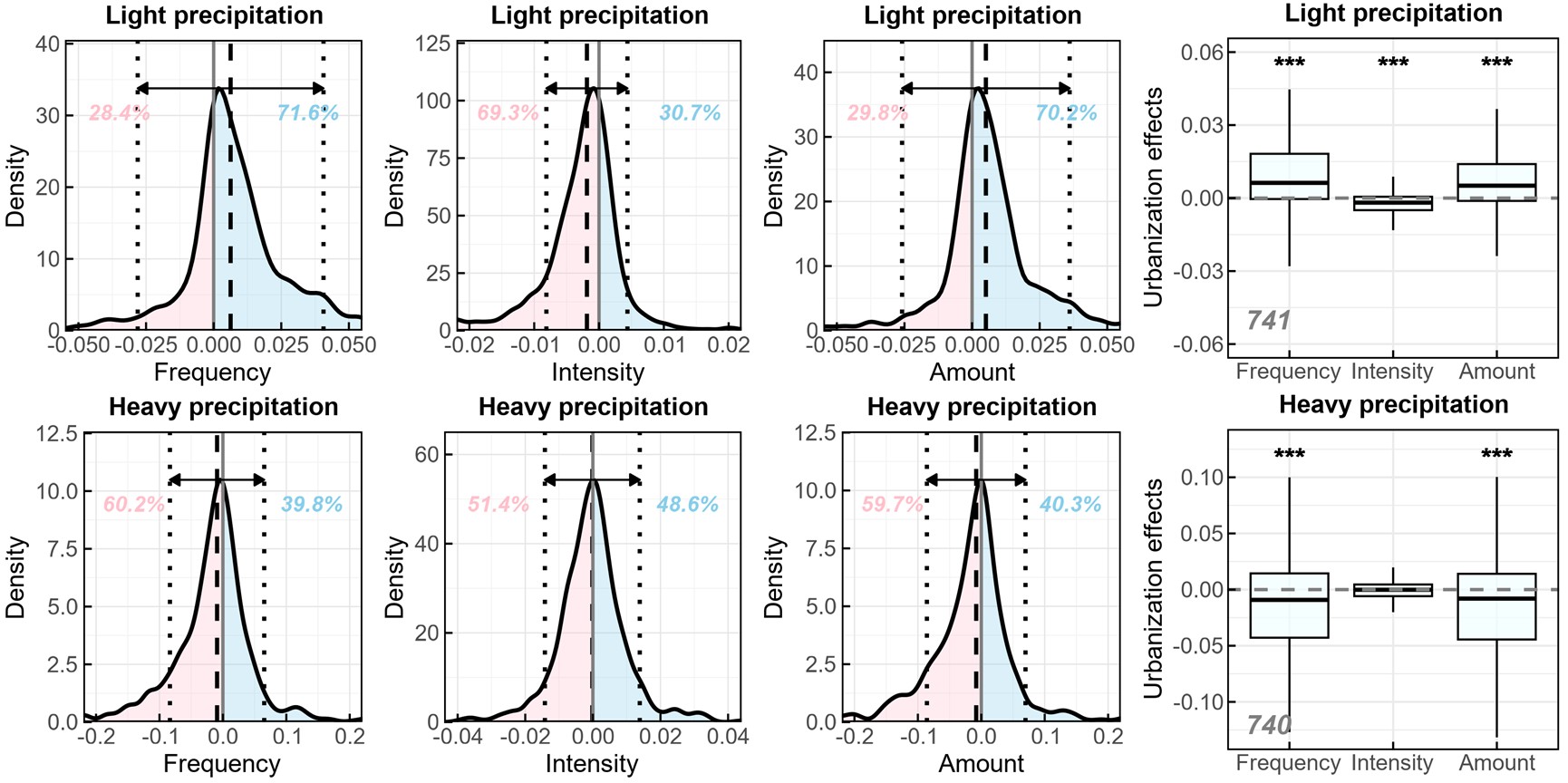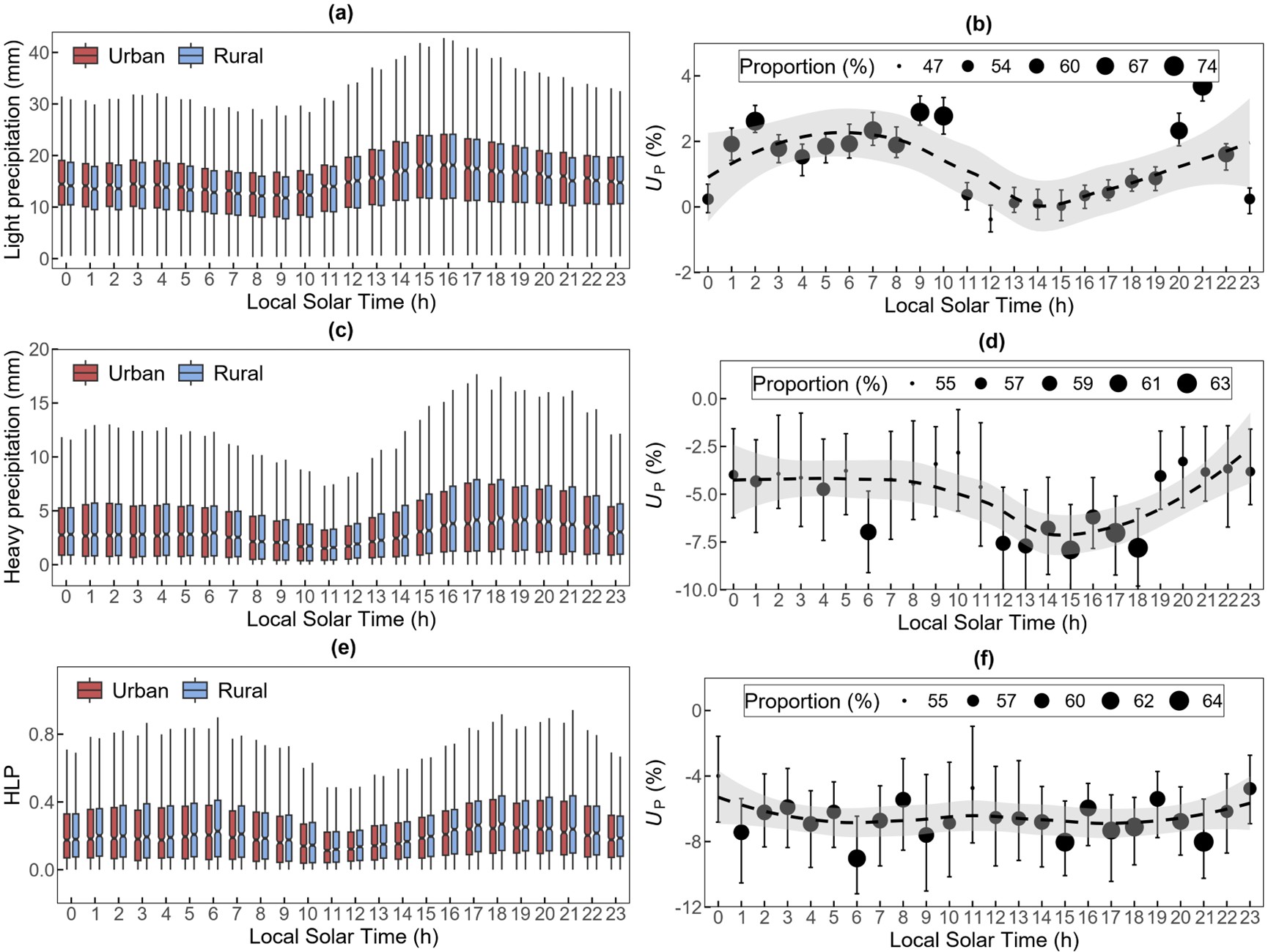Beijing, July 1, 2025 — A groundbreaking new study published in Nature Communications reveals that urbanization is not only transforming skylines but also quietly reshaping when, where, and how much it rains. The research, led by Professor Dawen Yang and Associate Professor Yuting Yang from Tsinghua University’s Department of Hydraulic Engineering, shows that urban expansion across the globe has significantly altered regional rainfall patterns—especially at sub-daily timescales.
The study, titled “Asymmetric shifts in precipitation due to urbanization across global cities,” found that light rain has become more frequent in many cities, while heavier downpours have decreased. This shift has led to a dampening of the natural daily rhythm of rainfall—an effect that could have serious implications for urban water systems, infrastructure design, and flood management.
Using high-resolution satellite data from 2001 to 2023, the team analyzed precipitation in 741 cities by comparing urban areas with nearby rural zones. They developed new indicators to measure changes in rainfall intensity and timing. Their findings include:
● More rain overall, but not all rain is equal: About 63% of cities saw increased total rainfall, especially in coastal areas of Africa, Asia, and North America. However, this increase was mostly due to more frequent light rain. Moderate and heavy rain events became less common in many locations.
● Light rain dominates: The researchers introduced a new metric—the Heavy-to-Light Precipitation (HLP) Ratio—and found that 67% of cities showed a shift toward lighter rainfall. This change is linked to urban development and varies by season and climate zone.
● City size and climate matter: Cities with populations over 1 million and medium levels of urban sprawl showed the most significant shifts. The effect was particularly strong in temperate regions, while tropical monsoon areas showed opposite trends.
● Rainfall timing is changing too: Urbanization is altering when it rains during the day. Light rain increased during early morning and evening hours, while heavy rain declined in the afternoon. This flattens the natural daily cycle of rainfall, potentially affecting local weather systems.
“This is the first global study to clearly demonstrate how urbanization is changing the character of rainfall—not just how much we get, but when and what kind,” said co-author Associate Professor Yuting Yang. “These subtle shifts could have big consequences for city planning and climate resilience.”
The paper’s first author is Jinghua Xiong, a Ph.D. candidate at Tsinghua University. The research was conducted in collaboration with Professor Long Yang of Nanjing University and supported by China’s Ministry of Science and Technology and the Department of Science and Technology of Qinghai Province.
Read the full article: https://doi.org/10.1038/s41467-025-61053-0.

Fig. 1: Climatology of urbanization effects on precipitation (2001–2023).

Fig. 2: Characteristics of urbanization effects on precipitation.

Fig. 3: Partitioning of urbanization effects on precipitation.

Fig. 4: Diurnal variability of urbanization effects on precipitation.